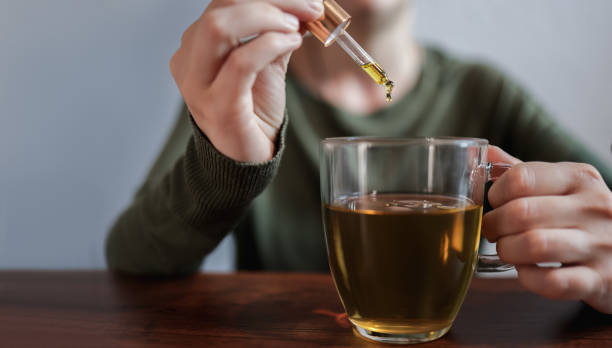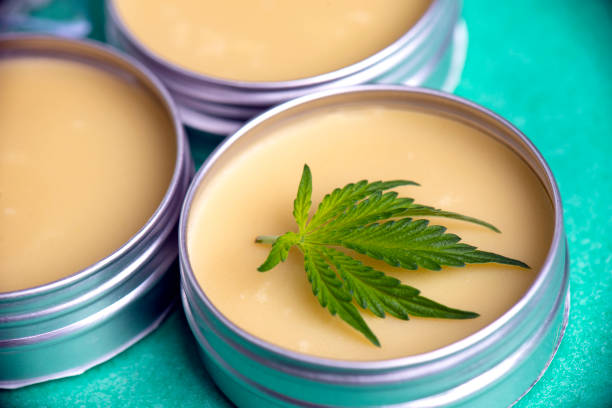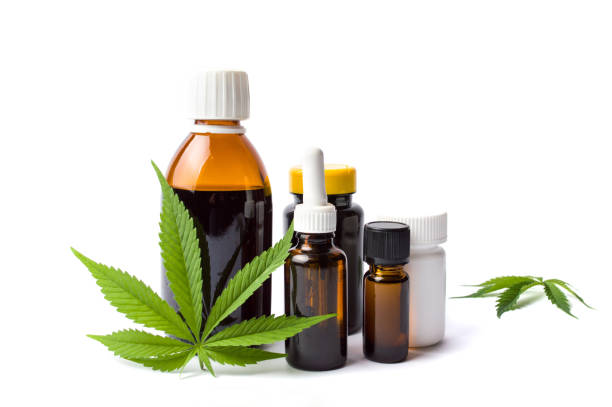Tinctures Or Topicals? Analyzing The Various Forms Of Cannabis Consumption
Cannabis consumption has evolved significantly over the years, with several methods now available for users. While smoking remains a popular and traditional way of consuming cannabis, other forms such as tinctures and topicals have gained widespread acceptance among enthusiasts. The rise in popularity of these alternative forms is due to their potency, convenience, and the fact that they offer a smoke-free alternative.
Tinctures and topicals are two of the most common non-smoking cannabis alternatives. Both have distinct benefits and drawbacks that make them suitable for different purposes. However, choosing between the two can be challenging for new users who may be unsure about what each form entails. This article aims to provide an in-depth analysis of tinctures and topicals to help readers understand how they work, their benefits and limitations, and ultimately determine which one is best suited for their needs.
Understanding the Different Forms of Cannabis Consumption
The study delves into comprehending the diverse modes of administering marijuana, thereby providing a broad understanding of how individuals consume this substance. Cannabis can be consumed in a variety of forms such as smoking, vaporizing, edibles, tinctures, and topicals. Smoking remains the most common method of consumption, but there has been an increase in other methods over recent years due to the legalization and increased availability of cannabis products.
Vaporizing involves heating cannabis without combustion to produce vapor that is then inhaled. Edibles are food items infused with cannabis extracts or oils that can be ingested orally. Tinctures are liquid extracts made from soaking cannabis in alcohol or glycerin for an extended period and can be taken sublingually (under the tongue) or added to beverages or food. Topicals refer to lotions, balms, and salves containing cannabinoids that are applied directly onto the skin for localized relief from pain or inflammation. Understanding these various forms of consumption allows individuals to make informed decisions about how they want to consume cannabis based on their preferences and desired effects.

How Tinctures Work
This section will discuss how tinctures work, focusing on three key points: absorption and metabolism, dosage and administration, and potential side effects. Tinctures are a popular form of cannabis consumption due to their ease of use and accurate dosing. Understanding how they work can help users make informed decisions about their cannabis use.
Absorption and Metabolism
Understanding the mechanisms of absorption and metabolism is crucial in comprehending how cannabis interacts with the body. When cannabis is consumed, it enters the bloodstream through either inhalation or ingestion. The method of consumption affects the rate at which cannabinoids are absorbed into the bloodstream and subsequently metabolized by the liver.
Inhalation allows for rapid onset of effects due to direct absorption through the lungs and into the bloodstream. This method results in higher bioavailability compared to other forms of consumption, as a large amount of cannabinoids bypass first-pass metabolism by avoiding digestion and being delivered directly to the brain. On the other hand, ingestion results in slower onset of effects due to first-pass metabolism in which cannabinoids are broken down by enzymes in the liver before entering systemic circulation. As a result, ingested cannabinoids have lower bioavailability than those that are inhaled. Overall, understanding how different methods of consumption affect cannabinoid absorption and metabolism is important for optimizing therapeutic outcomes while minimizing potential adverse effects.
Dosage and Administration
Accurately determining appropriate dosages and administering cannabis through different routes of administration is paramount in achieving optimal therapeutic outcomes while minimizing potential adverse effects. It is important to note that the recommended dose for each individual may vary depending on various factors, such as age, weight, and medical history. In addition, the desired effect may also influence the dosage required. For instance, a lower dose may be sufficient for mild pain relief while a higher dose may be necessary for severe pain management.
There are various ways to administer cannabis, including inhalation (smoking or vaporizing), ingestion (edibles or capsules), sublingual (under the tongue), topical application (lotions or balms), and rectal suppositories. Each route of administration has its own unique characteristics that affect how it is absorbed into the body and how quickly it takes effect. It is important to consider these factors when selecting an appropriate route of administration to achieve effective treatment outcomes with minimal side effects.
Potential Side Effects
The potential side effects of cannabis use should be carefully considered when selecting an appropriate route of administration to achieve optimal therapeutic outcomes, as the absorption and onset time vary depending on the chosen method. The most common side effects associated with cannabis use include dry mouth, red eyes, increased heart rate, impaired short-term memory, and altered judgment. These side effects are generally mild and transient but may lead to discomfort or inconvenience for some users.
Moreover, other potential side effects of cannabis use may include dizziness, nausea, paranoia, anxiety or panic attacks. These adverse reactions are more likely to occur in individuals who consume high doses of THC or have a low tolerance for its psychoactive effects. Therefore, it is important for patients to start with a low dose and gradually increase it until they reach their desired therapeutic effect while minimizing unwanted side effects. Overall, understanding the potential risks and benefits of different forms of cannabis consumption can help patients make informed decisions about their treatment options.

How Topicals Work
Exploring the mechanisms of transdermal absorption and the potential therapeutic benefits offered by topically applied cannabinoids can provide a better understanding of the pharmacological effects of cannabis. When topicals are applied to the skin, they interact with cannabinoid receptors located in various layers of skin cells. These receptors are part of the endocannabinoid system (ECS), which is responsible for maintaining homeostasis in various physiological processes such as pain perception, inflammation, and immune response.
Topicals work by penetrating through the skin's upper layer (epidermis) and entering into deeper layers where they interact with ECS receptors. Unlike other forms of consumption, such as smoking or ingesting cannabis products, topicals do not enter into the bloodstream or produce psychoactive effects. Instead, they provide localized relief from pain, inflammation, and other symptoms associated with conditions like arthritis or eczema. Research suggests that topically applied cannabinoids can also help regulate sebum production in skin cells and may have anti-aging properties due to their antioxidant properties. Therefore, exploring how topicals work can offer insights into new ways to harness the therapeutic potential of cannabis for medical purposes.
Which Form of Consumption is Right for You?
When it comes to choosing the best form of cannabis consumption, there are several factors that one must consider. Personal preferences and tolerance levels play a significant role in determining which form is right for an individual. Additionally, medical conditions and symptoms should be taken into account when deciding on the most appropriate method of consumption.
Factors to Consider
In order to make an informed decision on the most appropriate method of cannabis consumption, it is important to take into account a range of factors that are relevant to each individual's needs and preferences. Firstly, it is important to consider the desired effects and how quickly they are needed. For example, inhalation methods such as smoking or vaporizing provide rapid relief but may not last as long as edibles or tinctures which can take longer to take effect but may offer a more sustained experience.
Another factor to consider is dosage control. Edibles and tinctures allow for precise dosing while smoking can sometimes be difficult to measure accurately. It is also worth considering personal preference and lifestyle when choosing a method of consumption. For those who prefer not to inhale smoke or vapor, topicals and edibles may be preferred options. Ultimately, the choice of method should be based on the individual's unique circumstances and goals in using cannabis.
Personal Preferences and Tolerance
Understanding an individual's personal preferences and tolerance levels is crucial in deciding on the most suitable method of cannabis intake. As with any substance, not everyone will react to cannabis in the same way. Some may find that consuming edibles results in a more intense high than smoking or vaping, while others may prefer the slower onset and longer-lasting effects of edibles. A person's tolerance level can also play a significant role in determining which method of consumption they choose. Those with a higher tolerance may require larger doses or more potent products, whereas those with lower tolerances may benefit from starting with smaller amounts.
Another important consideration when it comes to personal preferences is ease of use and convenience. For example, someone who doesn't want to deal with the hassle of smoking or vaping might opt for a tincture or edible instead. On the other hand, some people enjoy the ritualistic aspects of smoking and prefer it over other methods despite its potential health risks. Ultimately, there is no one-size-fits-all answer when it comes to choosing between tinctures or topicals - each individual must weigh their own needs and preferences before making a decision about how best to consume cannabis.
Medical Conditions and Symptoms
The consideration of one's medical conditions and symptoms is a crucial factor in determining the most appropriate method for administering cannabis. For instance, topical applications may be more effective for localized pain relief as opposed to tinctures, which are ingested orally and take longer to work. Similarly, individuals with respiratory issues may prefer topicals over smoking or vaporizing cannabis.
Furthermore, different medical conditions may require different methods of consumption. For example, those with gastrointestinal disorders such as Crohn's disease may benefit from using ingestible forms of cannabis like tinctures or edibles. On the other hand, individuals with neurological disorders such as multiple sclerosis may find more relief from smoking or vaporizing cannabis due to its faster onset time and ability to alleviate muscle spasms. It is important for patients to consult with their healthcare provider and experiment with different forms of consumption to determine what works best for their specific condition and symptoms.
Conclusion and Recommendations
This discussion will focus on three key points related to combining tinctures and topicals, dosage and safety precautions, and finding quality products when using cannabis for medicinal or recreational purposes. Combining tinctures and topicals can provide targeted relief for specific ailments or conditions. Proper dosing and following safety precautions are crucial when consuming cannabis to avoid potential negative effects. Finally, finding high-quality products from reputable sources is important for ensuring the efficacy of treatment.
Combining Tinctures and Topicals
The integration of different modes of cannabis administration presents a promising avenue for exploring the synergistic effects of tinctures and topicals. Combining these forms of consumption may offer unique benefits, as topical applications target localized areas while tinctures provide systemic relief. While research on the combined use of topicals and tinctures is limited, anecdotal evidence suggests that this method can be effective in treating conditions such as chronic pain, inflammation, and skin conditions.
One potential benefit of combining topicals and tinctures is the ability to target both external and internal symptoms simultaneously. For example, a patient with arthritis may apply a topical directly to their affected joint while also taking a sublingual dose of CBD oil to address systemic inflammation. The combination of these two methods may offer more comprehensive relief than either form used alone. However, further research is needed to fully understand how these modes of administration interact with one another, including potential drug interactions or adverse effects.
Dosage and Safety Precautions
As mentioned in the previous subtopic, combining tinctures and topicals is becoming increasingly popular among cannabis consumers. However, it is important to consider dosage and safety precautions when using these products together or separately.
Dosage is a crucial aspect of cannabis consumption, as it affects how an individual experiences the effects of the plant. When using tinctures or topicals, it is recommended to start with a low dose and gradually increase until desired effects are achieved. This allows for individuals to find their optimal dose without experiencing any negative side effects such as nausea or anxiety. It is also important to note that dosages may vary based on an individual's body weight, tolerance level, and overall health.
Safety precautions should also be taken into consideration when consuming cannabis in any form. It is recommended to store all cannabis products out of reach from children and pets, as accidental ingestion can lead to harmful effects. Additionally, individuals should avoid driving or operating heavy machinery while under the influence of cannabis products as they can impair one's motor skills and reaction time. Overall, understanding proper dosage and safety measures when consuming tinctures or topicals can lead to a positive experience with minimal risks involved.
Finding Quality Products
Identifying high-quality products is essential when considering the use of cannabis for therapeutic purposes, as it ensures that one is receiving safe and effective treatment. With the increasing popularity of cannabis-based treatments, numerous products are now available in the market. However, not all of these products are created equal in terms of safety and efficacy. Hence, it is crucial to look for reputable manufacturers who follow strict quality control measures during production. One should also check if the product has undergone third-party laboratory testing to verify its potency and purity.
When evaluating a product's quality, one should also consider its ingredients and extraction methods. Ideally, cannabis-derived products should be made from organically grown plants without the use of harmful pesticides or fertilizers. Moreover, manufacturers should use safe and reliable extraction methods that do not leave behind any toxic residue or solvents in the final product. Additionally, consumers must ensure that they are purchasing a product with an appropriate THC (tetrahydrocannabinol) concentration level according to their needs; this aspect can affect both safety and effectiveness when using cannabis-based treatment options. Overall, finding high-quality cannabis-based products can significantly improve patients' chances of achieving positive therapeutic outcomes while minimizing potential side effects or adverse reactions.
Conclusion
In conclusion, the different forms of cannabis consumption offer unique benefits and drawbacks that cater to different preferences and needs. Tinctures are a discreet and fast-acting way to consume cannabis, making them ideal for individuals seeking immediate relief from symptoms such as pain or anxiety. On the other hand, topicals offer localized relief without inducing psychoactive effects, making them suitable for individuals who do not want to experience cognitive impairment.
It is crucial to consider factors such as desired effects, onset time, duration of effects, and personal preferences when choosing between tinctures or topicals. Consulting with a healthcare professional can also provide valuable insights into which form of consumption may be most appropriate for an individual's specific medical condition. Overall, both tinctures and topicals have their place in the world of cannabis consumption, offering unique benefits that make them viable options for medicinal or recreational use.
If you're looking for more ideas about this topic, feel free to read this blog post from Local Product of Colorado: https://localproduct.co/how-do-weed-tinctures-compare-to-other-forms-of-cannabis-consumption/

